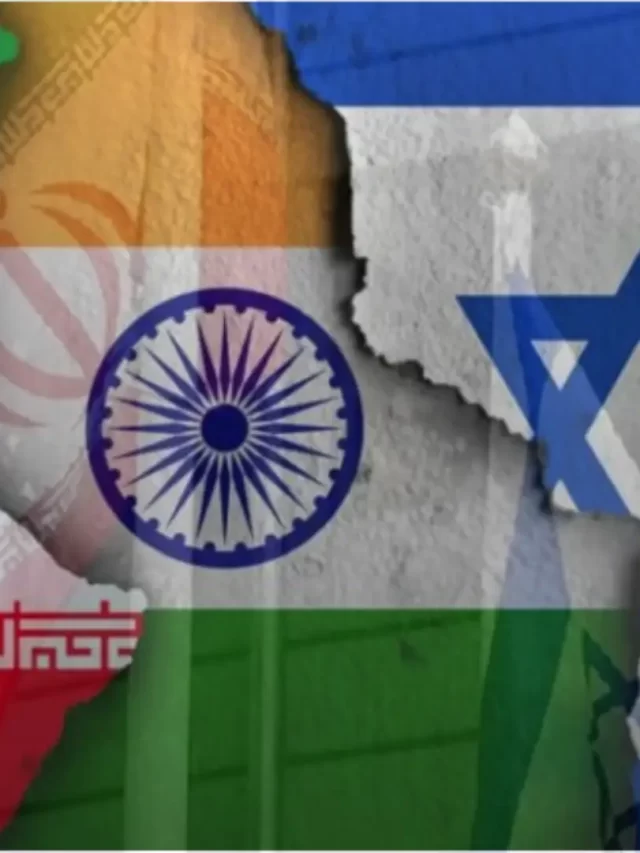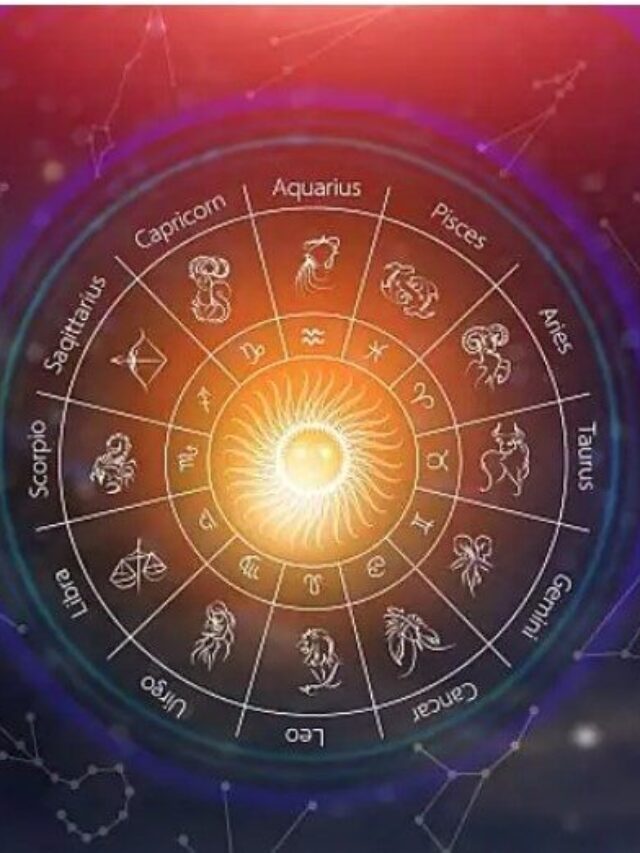Pitru Paksha 2023: Honoring Ancestral Souls through Shradh Ritual
Pitru Paksha 2023: Dates, Shradh Ritual, and Ancestral Prayers
Pitru Paksha 2023 will begin on Friday, 29 September and ends on Saturday, 14 October. It is a period when Hindus offer prayers to their ancestors through the Shradh ritual. Learn about the significance, rituals, and FAQs.
Pitru Paksha 2023: इस दिन से होगी पितृ पक्ष की शुरुआत, जानें श्राद्ध की सारी तिथियां
Pitru Paksha 2023:आज से हो रही है पितृपक्ष की शुरुआत, जानें तर्पण विधि और श्राद्ध पक्ष की तिथियां – Pitru Paksha 2023 Start Date Tarpan Vidhi Mantra Pind Daan Puja Samagari And Shradh Niyam
Imagine a time when the bond between the living and the departed is felt most intensely. Pitru Paksha 2023, spanning from September 29th to October 14th, holds this special place in the Hindu calendar. During these sixteen days, Hindus across the world engage in the sacred ritual of Shradh, a practice that symbolizes a deep connection between generations and honors the souls of ancestors. This article delves into the rich tapestry of Pitru Paksha, exploring its significance, the revered Shradh ritual, and the intricate blend of spirituality and tradition that characterizes this period.
पित पृक्ष 2023 श्राद्ध तिथियां
पूर्णिमा का श्राद्ध – 29 सितंबर 2023 (शुक्रवार)
प्रतिपदा का श्राद्ध – 29 सितंबर 2023 (शुक्रवार)
द्वितीया का श्राद्ध – 30 सितंबर 2023 (शनिवार)
तृतीया का श्राद्ध – 1 अक्टूबर 2023 (रविवार)
चतुर्थी का श्राद्ध – 2 अक्टूबर 2023 (सोमवार)
पंचमी का श्राद्ध – 3 अक्टूबर 2023 (मंगलवार)
षष्ठी का श्राद्ध – 4 अक्टूबर 2023 (बुधवार)
सप्तमी का श्राद्ध – 5 अक्टूबर 2023 (गुरुवार)
अष्टमी का श्राद्ध – 6 अक्टूबर 2023 (शुक्रवार)
नवमी का श्राद्ध – 7 अक्टूबर 2023 (शनिवार)
दशमी का श्राद्ध – 8 अक्टूबर 2023 (रविवार)
एकादशी का श्राद्ध – 9 अक्टूबर 2023 (सोमवार)
मघा श्राद्ध – 10 अक्टूबर 2023 (मंगलवार)
द्वादशी का श्राद्ध – 11 अक्टूबर 2023 (बुधवार)
त्रयोदशी का श्राद्ध – 12 अक्टूबर 2023 (गुरुवार)
चतुर्दशी का श्राद्ध – 13 अक्टूबर 2023 (शुक्रवार)
सर्वपितृ मोक्ष अमावस्या – 14 अक्टूबर 2023 (शनिवार)
The Essence of Pitru Paksha
Pitru Paksha, often referred to as the “fortnight of ancestors,” is a solemn observance that underscores the belief in the continuity of life beyond death. Spanning over a fortnight, this period is governed by the lunar calendar, aligning with the waning moon phase. It is believed that the gates of heaven open, allowing ancestral spirits to visit their earthly descendants. This communion between the living and the departed forms the heart of Pitru Paksha.
How many types of Shradh are there?
In the realm of Hindu rituals and traditions, Shradh holds a significant place. Shradh is a ceremony dedicated to paying homage to one’s ancestors, seeking their blessings, and ensuring their peaceful journey in the afterlife. It’s a deeply rooted practice that takes on various forms and types. In this article, we will delve into the intricacies of Shradh rituals and explore the different types that are performed.
Understanding the Essence of Shradh
Shradh, often referred to as ‘Pitr Paksha,’ is a fortnight-long ritual that occurs in the Hindu lunar month of Bhadrapada, typically falling in September or October. This period is considered highly auspicious for paying respects to departed souls. Shradh is performed with utmost devotion and sincerity, aiming to satisfy the souls of the deceased ancestors.
The Twelve Types of Shradh
Shradh rituals are not one-size-fits-all; they come in various forms, each serving a specific purpose. The prominent texts mention twelve types of Shradh, each with its unique significance:
- Nitya Shradh: This is the daily offering made to the ancestors to seek their continuous blessings and protection.
- Neimitik Shradh: Occurring on specific occasions, this Shradh is performed during eclipses and other astrologically significant events.
- Kaamya Shradh: Conducted with a specific wish or desire in mind, Kaamya Shradh aims to fulfill personal aspirations.
- Vriddhi Shradh: This Shradh is performed during important milestones, such as a child’s birth or marriage, to celebrate and seek blessings.
- Sapindan Shradh: Sapindan is a Shradh performed for the deceased ancestors up to three generations ago, connecting them to the current generation.
- Paarvann Shradh: This Shradh is observed on the day when the lunar tithi of the deceased person matches the current tithi.
- Goshtth Shradh: Performed to invite and honor the souls of the deceased, Goshtth Shradh is significant for family harmony and prosperity.
- Shurdhyarth Shradh: This Shradh is conducted for the deceased who met with untimely or accidental deaths.
- Karmaang Shradh: It involves a specific act of kindness or charity performed in the name of the deceased.
- Deivik Shradh: Dedicated to honoring divine souls and saints who have passed away, Deivik Shradh carries a unique spiritual essence.
- Oupcharik Shradh: This Shradh involves offering food and other essentials to Brahmins or priests as a form of homage to the ancestors.
- Saanvatsarik Shradh: Saanvatsarik Shradh is an annual ceremony performed on the death anniversary of the departed soul.
Lunar Tithi and Shradh
The Shradh of the ancestors is typically performed on the lunar tithi (date) corresponding to the day they passed away. This alignment with the lunar calendar is considered essential for ensuring the efficacy of the Shradh rituals.
Shradh is a profound and meaningful tradition in Hindu culture, encompassing various types of rituals to honor and remember ancestors. Each type of Shradh serves a distinct purpose, catering to different situations and intentions. By performing these rituals with devotion and sincerity, individuals seek not only to pay homage to their forebears but also to ensure their well-being in the afterlife.
Unlocking the Mysteries of Pitra Paksha: Honoring Ancestral Souls
In the tapestry of Hindu culture and spirituality, Pitra Paksha stands as a sacred thread that connects the living to their ancestors. This 15-day observance, also known as Pitri Pokho, Sola Shradha, Kanagat, Jitiya, or Apara Paksha, commences on the 1st Tithi of the Ashwin Maas and extends until the New Moon day (Amavasya), often referred to as Sarvapitri Amavysya or Mahalaya Amavysya. During this time, Hindus perform the Shraddha or Tarpan rituals to honor their forefathers. But what is the significance of this solemn tradition, and why is it performed?
The Purpose of Shradh
According to Hindu mythology, the soul’s journey after death takes it through various realms. Pitra Paksha is a period dedicated to appeasing the departed ancestors through Shraddha rituals. It is a way of repaying debts to the ancestors and ensuring their peaceful journey in the afterlife. Hindu scriptures like the Agni Puran, Garuda Puran, and Vayu Puran delve into the profound significance of “Shraddha.”
Unpacking the Meaning of Shradh
The term ‘Shraddha’ has its roots in Sanskrit, with ‘Sat’ signifying truth and ‘Adhar’ representing basis or foundation. Thus, Shraddha embodies actions performed with utmost sincerity and faith. It is an expression of unconditional reverence towards one’s ancestors.
Tracing the Origins of Shradh
In the annals of Hindu sacred texts, it was Rishi Atri, one of Lord Brahma’s ten sons, who first unraveled the intricacies of Shraddha rituals, as devised by Lord Brahma himself. The genesis of this tradition can be traced back to the grieving Nimi Rishi, who, guided by Narad Muni, invoked his ancestors after the untimely demise of his son. The ancestors appeared before him and conveyed, “Nimi, your son has already ascended to the realm of Pitra Devas. Your act of feeding and worshiping his departed soul is equivalent to performing Pitri Yajna.” Since that pivotal moment, Shradh has become an indispensable ritual within the Sanatan Dharma.
The Twelve Types of Shradh
Within the rich tapestry of Hindu traditions, twelve distinct kinds of Shradh have been documented. These encompass Nitya, Neimitik, Kaamya, Vriddhi, Sapindan, Paarvann, Goshtth, Shurdhyarth, Karmaang, Deivik, Oupcharik, and Saanvatsarik Shradh. Each type serves a unique purpose and carries its own set of customs and observances.
Exceptions in Performing Shradh
While the general rule dictates that Shraddha should be performed on the Lunar tithi corresponding to the ancestor’s passing, certain exceptions apply:
- Pratipada Shradh is suitable for honoring maternal grandparents (Nana-Nani).
- The fourth day (Chautha Bharani) and fifth day (Bharani Panchmi) are dedicated to individuals who passed away in the previous year.
- Panchami Shradh is apt for paying tribute to unmarried family members who have departed.
- Avidha Navami is fitting for performing Shradh for married women who passed away before their husbands.
- Dwadashi Shradh is appropriate for those who renounced worldly life before their demise.
- Trayodashi Shradh is the time to remember and honor departed children.
- Ghata Chaturdashi is reserved for individuals who met a sudden and violent end.
- Mahalaya or Sarvpitri Amavasya is the day when all ancestors and forefathers are revered.
The Significance of Shradh
Shradh is not merely a ritual; it is a cornerstone of Indian traditions. It is a means of showing respect and offering moksha to the souls of departed ancestors. This sacred practice fosters a deep spiritual connection between the living and the departed, bridging the gap between generations.
As we engage in the rituals of Pitra Paksha, we are reminded of the timeless bonds that connect us to our roots. These traditions not only honor our forefathers but also provide us with an opportunity for spiritual growth and introspection.
Frequently Asked Questions
Significance of Ancestral Prayers
The central theme of Pitru Paksha revolves around expressing reverence and gratitude towards one’s ancestors. Hindus believe that by performing rituals and prayers, they can provide solace and assistance to their forefathers’ souls in the afterlife. It’s a way to repay the debt of love and sacrifices inherited from previous generations.
Pitru Paksha 2023: पितृपक्ष पितरों को समर्पित है। इस दौरान पितरों की आत्मा की शांति के लिए श्राद्ध किया जाता है। पंचांग के अनुसार पितृपक्ष की शुरुआत भाद्रपद माह की पूर्णिमा तिथि से होती है और अश्विन माह के कृष्ण पक्ष की अमावस्या तिथि पर इसका समापन होता है। पितृपक्ष यानी श्राद्ध का हिंदू धर्म में विशेष महत्व होता है। पितृपक्ष के दौरान पूर्वजों को श्रद्धापूर्वक याद करके उनका श्राद्ध कर्म किया जाता है। पितृपक्ष में पितरों को तर्पण देने और श्राद्ध कर्म करने से उनको मोक्ष की प्राप्ति होती है। इस दौरान न केवल पितरों की मुक्ति के लिए श्राद्ध किया जाता है, बल्कि उनके प्रति अपना सम्मान प्रकट करने के लिए भी किया जाता है। पितृपक्ष में श्रद्धा पूर्वक अपने पूर्वजों को जल देने का विधान है। ऐसे में चलिए जानते हैं तर्पण विधि, नियम, सामग्री और मंत्र के बारे में…
कब से शुरू हो रहा है पितृपक्ष 2023 ?
पितृपक्ष की शुरुआत इस साल 29 सितंबर 2023 से हो रही है। इसका समापन 14 अक्टूबर को होगा।
पितृपक्ष में तर्पण विधि
पितृपक्ष के दौरान प्रतिदिन पितरों के लिए तर्पण करना चाहिए। तर्पण के लिए आपको कुश, अक्षत्, जौ और काला तिल का उपयोग करना चाहिए। तर्पण करने के बाद पितरों से प्रार्थना करें और गलतियों के लिए क्षमा मांगें।
पितृपक्ष 2023 प्रार्थना मंत्र
1- पितृभ्य:स्वधायिभ्य:स्वधा नम:।
पितामहेभ्य:स्वधायिभ्य:स्वधा नम:।
प्रपितामहेभ्य:स्वधायिभ्य:स्वधा नम:।
सर्व पितृभ्यो श्र्द्ध्या नमो नम:।।
2- ॐ नमो व :पितरो रसाय नमो व:
पितर: शोषाय नमो व:
पितरो जीवाय नमो व:
पीतर: स्वधायै नमो व:
पितर: पितरो नमो वो
गृहान्न: पितरो दत्त:सत्तो व:।।
पितृपक्ष में श्राद्ध कर्म करने वाले लोग बरतें ये सावधानी
पितृपक्ष में पितरों की आत्मा की शांति के लिए जो भी श्राद्ध कर्म करते हैं, उन्हें इस दौरान बाल और दाढ़ी नहीं कटवाना चाहिए। साथ ही इन दिनों में घर पर सात्विक भोजन ही बनाना चाहिए। तामसिक भोजन से पूरी तरह परहेज करना चाहिए।
पितृपक्ष का महत्व
कहा जाता है कि पूर्वजों की तीन पीढ़ियों की आत्माएं पितृलोक में निवास करती हैं। पितृलोक स्वर्ग और पृथ्वी के बीच का स्थान माना जाता है। यह क्षेत्र मृत्यु के देवता यम द्वारा शासित है, जो एक मरते हुए व्यक्ति की आत्मा को पृथ्वी से पितृलोक तक ले जाता है। ऐसे में जब आप पितृपक्ष के दौरान श्राद्ध कर्म करते हैं तो पितरों को मुक्ति मिलती है और वे स्वर्ग लोग में चले जाते हैं।
Shradh: A Ritual of Love and Remembrance
Shradh, the cornerstone of Pitru Paksha, is a profound ritual where families gather to offer food, water, and prayers to their departed loved ones. The term “Shradh” originates from Sanskrit, meaning “faithful offering.” The practice involves preparing a feast, known as “Pind Daan,” consisting of favorite dishes of the departed. These offerings are placed on a banana leaf and presented with devotion, reflecting the idea of sharing one’s daily sustenance with the ancestors.
The Ritual of Pind Daan
The ritual of Pind Daan is a pivotal aspect of Shradh. Families seek out a sacred site, often on the banks of holy rivers, to perform this ceremony. Each offering, symbolized by a rice ball, is dedicated to a specific ancestor. The belief is that these offerings nourish and satisfy the souls, ensuring their well-being in the afterlife.
Honoring Ancestral Bonds: Pitru Paksha in Practice
During Pitru Paksha, families engage in rituals that bridge the gap between the realms of the living and the dead. These rituals underscore the importance of kinship, gratitude, and carrying forward the legacy of traditions.
Rituals Passed Through Generations
Pitru Paksha is a time-honored tradition passed down through generations. The practice brings families together, fostering a sense of unity and continuity. The stories shared during these rituals offer younger generations insights into their family history, imparting wisdom and values.
Seeking Ancestral Blessings
The period of Pitru Paksha is an opportunity for individuals to seek blessings from their ancestors. It’s believed that by performing the rituals diligently, one can receive guidance, protection, and blessings for a prosperous life.
Sharing Stories and Memories
Pitru Paksha encourages families to come together and share stories about their ancestors. These tales not only celebrate the lives of the departed but also strengthen the bonds between family members.
FAQs about Pitru Paksha
What is the significance of Pitru Paksha?
Pitru Paksha holds immense significance as it’s a time when Hindus honor their ancestors through rituals like Shradh. It’s believed that performing these rituals brings blessings and ensures the well-being of the departed souls.
When does Pitru Paksha 2023 take place?
Pitru Paksha 2023 is scheduled to begin on Friday, September 29th, and conclude on Saturday, October 14th.
What is the Shradh ritual?
Shradh is a ritual where families offer food, water, and prayers to their ancestors. It’s a way to show love, respect, and gratitude to the departed souls.
Can non-Hindus participate in Pitru Paksha rituals?
While Pitru Paksha is deeply rooted in Hindu traditions, non-Hindus can also participate as a mark of respect for their own ancestors or to understand and appreciate diverse cultures.
Are there variations in Pitru Paksha rituals across regions?
Yes, Pitru Paksha rituals can vary based on regional customs and beliefs. While the essence remains the same, specific practices may differ.
How does Pitru Paksha foster family bonds?
Pitru Paksha encourages families to come together, share stories, and perform rituals collectively. This strengthens family bonds and creates a sense of unity and continuity.
Conclusion
Pitru Paksha 2023, spanning from September 29th to October 14th, is a time of reverence, connection, and gratitude. The rituals performed during this period not only honor ancestors but also serve as a reminder of the unbroken thread that binds generations. Through Shradh, families express their love, respect, and remembrance for their departed loved ones. As the gates between realms open, Pitru Paksha becomes a bridge of emotions, traditions, and cherished memories, symbolizing the eternal cycle of life and beyond
- Is Shradh only observed by Hindus?
- No, Shradh is primarily a Hindu tradition, but variations of ancestor worship can be found in other cultures and religions as well.
- Can I perform Shradh for someone who wasn’t Hindu?
- While Shradh is rooted in Hinduism, some individuals choose to adapt it to their beliefs and perform similar ceremonies for their departed loved ones.
- What are the common offerings made during Shradh rituals?
- Offerings typically include food, water, and prayers, along with recitations from sacred texts.
- Are there specific guidelines for conducting Shradh at home?
- Yes, there are traditional rituals and mantras that should be followed, which can vary by region and tradition.
- How can I determine the lunar tithi for performing Shradh for my ancestors?
- Consult a Hindu calendar or an astrologer to accurately determine the lunar tithi for the Shradh ceremony.






















